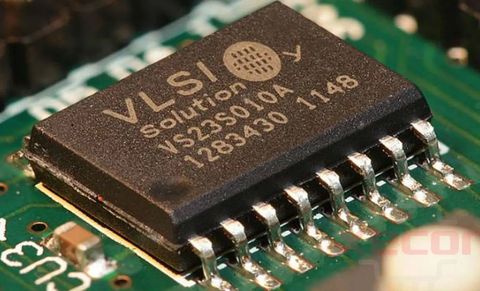Thumbwheel Potentiometers Overview: Explore Working Principles, Applications, and Important Insights
Thumbwheel potentiometers are electromechanical devices used to manually adjust resistance values through a rotating wheel or dial. They exist because many electronic control systems require a simple, precise, and repeatable method to set parameters such as voltage, signal levels, calibration points, and input values. Their design makes them easy to operate, even in compact or embedded environments, where space-saving adjustable components are essential.
These components are commonly found in instrumentation engineering, industrial automation components, consumer electronics, measurement devices, and various control panels. The adjustable wheel provides a clear visual indication of the chosen setting, making them more user-friendly than traditional rotary knobs in certain designs.
Thumbwheel potentiometers remain important because they allow accurate manual adjustment of electrical resistance without complex interfaces. Their simple mechanism, long service life, and compatibility with both analog and digital circuits continue to support their relevance in today’s advanced electronic control systems.
Importance
Thumbwheel potentiometers matter today because they fill a practical role in systems that rely on manual calibration and precise parameter settings. Their importance extends across diverse fields:
-
Industrial automation systems, where operators need quick fine-tuning during machine calibration
-
Electronic control circuits, which depend on adjustable input values
-
Measurement and testing equipment, requiring precision sensing technology
-
Aviation instruments and navigation panels, where reliable manual adjustment is essential
-
Medical and laboratory devices, where consistent repeatability is important
This device helps technicians and engineers maintain accurate performance settings in machinery, instruments, and embedded systems. In situations where digital interfaces or programmable inputs are unnecessary, a thumbwheel potentiometer provides a stable, low-complexity solution.
By offering tactile feedback and clear numerical indicators, these potentiometers solve problems related to accidental misadjustment, unclear settings, and inconsistent calibration. They also support environments where operators require a rapid, hands-on approach rather than software-based configuration.
Recent Updates
The past year has seen several developments connected to electromechanical components and precision adjustment devices like thumbwheel potentiometers. These trends reflect broader advancements in automation, miniature electronics, and sensing technology:
-
Smaller and more compact designs (2024–2025)
Manufacturers have released miniaturized versions to meet the demand for dense circuit layouts, especially in wearable electronics and robotics. -
Improved materials and durability (2024)
Enhanced contact materials, such as carbon-film and conductive-polymer elements, have increased lifespan and resistance accuracy. -
Growing integration with digital control systems (2024–2025)
Hybrid modules now allow analog thumbwheel settings to interface with programmable logic, making them useful in mixed-signal environments. -
Sustainability and compliance upgrades (2024)
Component manufacturers have transitioned toward more environmentally friendly materials to align with global standards such as RoHS and REACH. -
Rising demand in automation retrofits (2024–2025)
Older industrial equipment that still relies on manual adjustment contributed to a continued need for reliable, electromechanical adjustment components.
These updates highlight the continued relevance of thumbwheel potentiometers in a world rapidly shifting toward digital and automated control systems.
Laws or Policies
Thumbwheel potentiometers are influenced by several regulations related to electrical, environmental, and manufacturing standards. While these regulations vary by region, they often cover safety, material composition, and electromagnetic compatibility:
-
RoHS (Restriction of Hazardous Substances)
Limits the use of materials such as lead, mercury, and cadmium in electrical components. -
REACH (Registration, Evaluation, Authorisation, and Restriction of Chemicals)
Ensures materials used in electromechanical devices are safe for human handling and long-term environmental impact. -
IEC and ISO standards
Apply to the performance, reliability, and testing of electronic and industrial automation components. -
National electrical and safety codes
Influence how components are incorporated into consumer and industrial electrical systems.
These policies ensure that thumbwheel potentiometers meet international requirements for safety, reliability, and environmental responsibility. Compliance also ensures compatibility with global supply chains and industrial control systems.
Tools and Resources
Several helpful tools and resources support engineers, students, and technicians working with thumbwheel potentiometers:
-
Circuit simulation software (LTspice, Multisim, Proteus) for testing resistance behavior
-
Electronic component calculators to estimate resistance adjustments
-
Datasheet repositories for checking specifications and tolerance values
-
Schematic design tools such as KiCad or Eagle for integration planning
-
Engineering reference handbooks for electromechanical device standards
These resources help users understand adjustment ranges, electrical ratings, tolerance levels, and proper installation techniques.
Technical Overview Table
| Parameter | Description |
|---|---|
| Adjustment Method | Manual wheel or dial used to set resistance value |
| Common Resistance Values | 1 kΩ to 1 MΩ in incremental steps |
| Typical Applications | Calibration, signal adjustment, automation panels, testing equipment |
| Construction Types | Carbon film, conductive polymer, wire-wound |
| Advantages | Precise, repeatable, tactile, easy to operate |
| Form Factors | Horizontal, vertical, PCB-mounted, panel-mounted |
FAQs
What is the purpose of a thumbwheel potentiometer?
It provides a manual, adjustable resistance setting for controlling voltage levels, signal strength, or calibration points in electronic circuits.
How does a thumbwheel potentiometer differ from a rotary potentiometer?
A thumbwheel version uses a numbered wheel for setting values, offering clearer visual indication and more repeatable adjustments compared to traditional rotary knobs.
Where are thumbwheel potentiometers commonly used?
They appear in industrial automation components, measurement devices, aviation controls, laboratory equipment, and electronic control systems that require precise manual input.
Are thumbwheel potentiometers compatible with digital systems?
Yes, many modern systems integrate them into mixed analog-digital setups, allowing manual calibration alongside programmable control platforms.
What factors should be checked before selecting a thumbwheel potentiometer?
Resistance value, tolerance, operating temperature, adjustment increments, mounting style, and material type are key considerations.
Conclusion
Thumbwheel potentiometers continue to play a valuable role in precision control and manual adjustment across many sectors. Their clear display, tactile operation, and stable performance make them useful in industrial automation, instrumentation engineering, and various electromechanical devices. Despite the growth of digital adjustment technologies, the simplicity and reliability of thumbwheel potentiometers ensure they remain an essential component in modern electronic design.
These devices support accurate tuning, consistent calibration, and user-friendly operation, making them relevant for today’s control systems and future-ready equipment. With ongoing improvements in materials, compliance standards, and hybrid integration features, thumbwheel potentiometers remain a practical solution for engineers and technicians seeking dependable manual adjustment in electrical and electronic applications.






